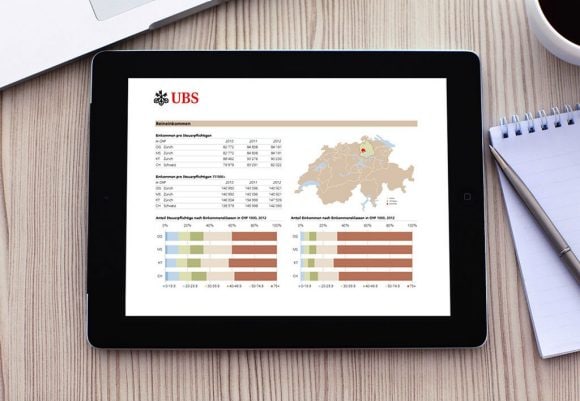We're here for you when you need us
Make an appointment for a non-binding consultation or call us directly if you have questions.
Buying real estate
Choosing where to live is complex. Our study reveals the most attractive Swiss municipalities, although personal preferences remain decisive.
Content

If you’re thinking of buying a residential property, you have many decisions to make: How should the property be furnished? How should it look? And how will you finance it? The location you choose is decisive not only for your quality of life but also the property price.
Factors in the ideal location
What makes an attractive location is determined by general criteria, such as infrastructure. For example, are the transport connections good? Are there enough shops and a wide range of services in the immediate vicinity? Is medical care guaranteed and can both schools and childcare facilities be reached within a short time?
Another criterion is the leisure options on offer. This is the most diverse in the most attractive municipalities – and offers a wide variety of choices, from cultural institutions and sports facilities to extensive and inviting parks and recreation areas. Financial aspects are also part of the catalog of criteria. An important parameter is, for example, housing costs: taxes, real estate prices or rents. However, your individual life situation is just as important for your decision about where to live, as are your personal preferences. Do you prefer to be close to the mountains or do you feel more comfortable in the urban jungle? Last but not least, the beauty of a location is in the eye of the beholder.
The most attractive municipalities in Switzerland
The UBS “Residential Attractiveness Indicator (RAI)” study uses the three thematic pillars of infrastructure, leisure facilities and housing costs for 13 regions to provide information on the best place to live. RAI calculates how attractive a Swiss municipality is as a place to live for families with two children according to 35 variables.
Attractive but high-priced centers
The municipalities ranked highest in the Residential Attractiveness Indicator are often expensive places. Their attractiveness has always made them desirable places to live, driving up real estate prices. However, these high housing costs offer something in return. The top-ranked municipalities are characterized by excellent infrastructure. This includes a wide range of shops, good medical care, and easily accessible schools and childcare facilities. The leisure offerings – from numerous cultural facilities to diverse sports opportunities and extensive park and recreational areas – are also varied in the most attractive municipalities.
Due to high housing costs, it is not always the large centers and prestigious low-tax municipalities that top the list in many regions. The quality of infrastructure and quality of life cannot always outweigh the high cost of living. For example, in the Zurich region, the municipalities of Aarau and Schaffhausen surpass the Zurich lake municipalities. In Western Switzerland, Vevey and Morges are more attractive than Lausanne, and in Ticino, Tenero-Contra and Muralto rank ahead of Lugano. There are only a few municipalities that can boast above-average infrastructure and quality of life with below-average housing costs. These include Schaffhausen, Goldach, Rheinfelden, Yverdon-les-Bains, and Delémont.
According to the new UBS Housing Attractiveness Indicator mid-sized centers in ten of the 13 analyzed regions offer the highest attractiveness for a family with two children and average financial means. These include Locarno and Vevey, as well as the cantonal capitals Aarau, Chur, Fribourg, Lucerne, Neuchâtel, Sion, Solothurn, and St. Gallen. In addition to these mid-sized centers, the list of top municipalities is completed by Basel, Interlaken, and Murten. The two major centers Bern and Lausanne make it into the top three of their respective regions.
The top 3 municipalities per region

Personal factors in choosing a home
The objective factors give you a first impression of why the respective Swiss municipality is attractive. However, you’ll only get a really good picture if you also include your personal needs in the decision-making process.
You should also be aware that there are also different residential areas within the municipalities with individual advantages and disadvantages. For you, a good connection to public transport may be essential, which is not equally guaranteed by every neighborhood in the municipality. Or you may prefer morning sun and can do without evening sun, or vice versa. You may be less sensitive to noise, but more sensitive to odors.
Even if you already know what you want and need, it’s worth creating a checklist. In this way, you can determine exactly which factors are important to you personally when choosing the location and the property as a whole.
Compact municipality facts: your favorite in focus
As soon as you know which municipality suits you, you can go into even more detail in your research. Our municipality guide can help you.

The facts about your preferred municipality
Do you want to understand how property prices or population levels have changed in a municipality? Or how the location is perceived in general? How high are taxes? The UBS municipality guide is free of charge and answers all your questions.
Conclusion
From the features and condition to the price and financing, many questions arise when buying residential property. Another question is “which is the best Swiss municipality to live in?” You can find the answer in the current UBS Residential Attractiveness study, which evaluates municipalities according to objective criteria. Although it is designed for a family with two children, it also provides you with valuable information for other family models. In addition, it’s also important for successful decision-making that you take subjective factors into account – i.e., everything that is personally close to you and your loved ones’ hearts.
Make an appointment for a non-binding consultation or call us directly if you have questions.
Disclaimer
